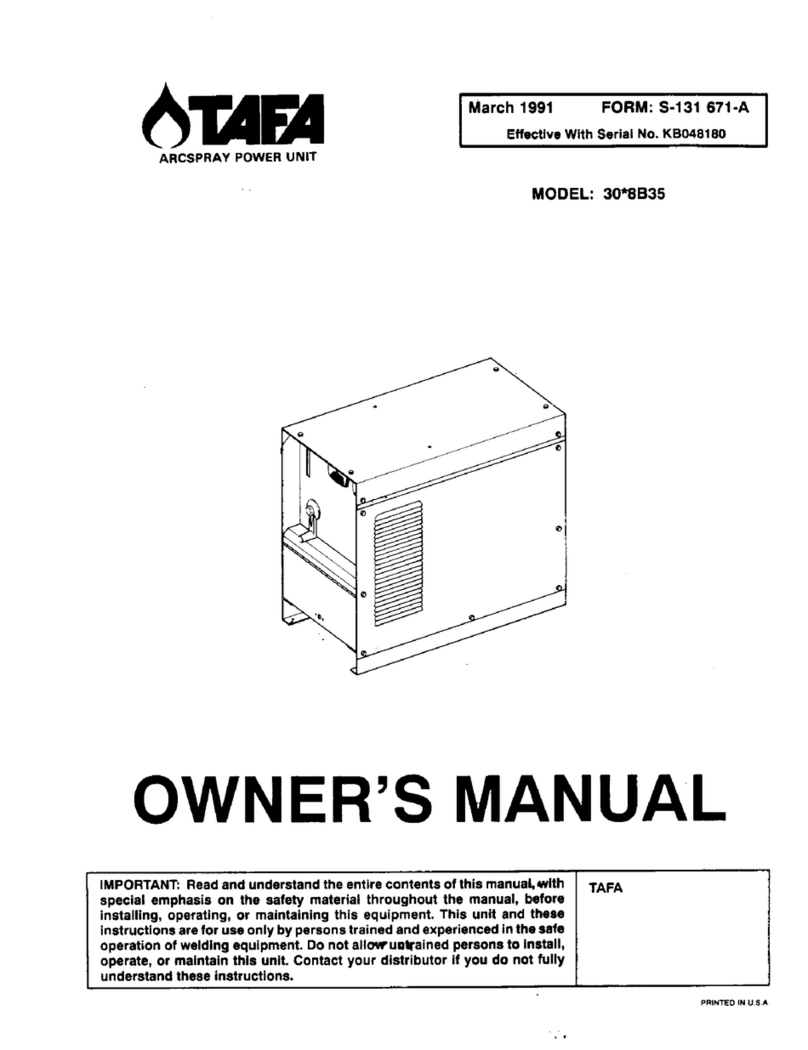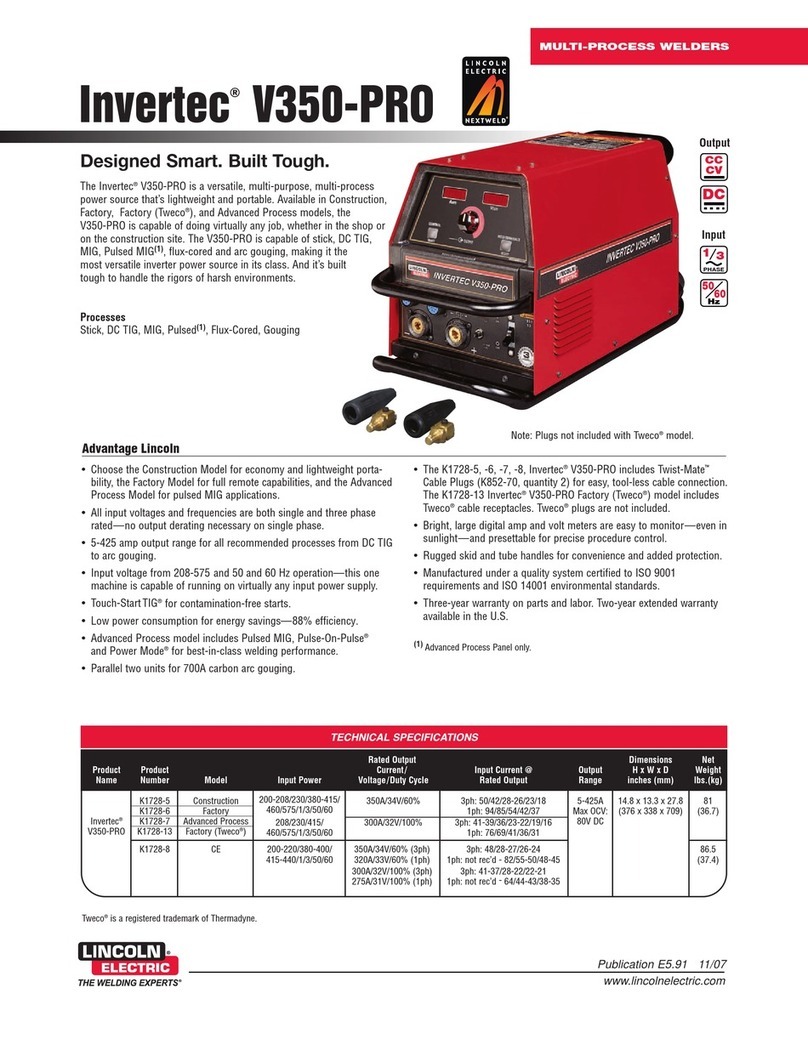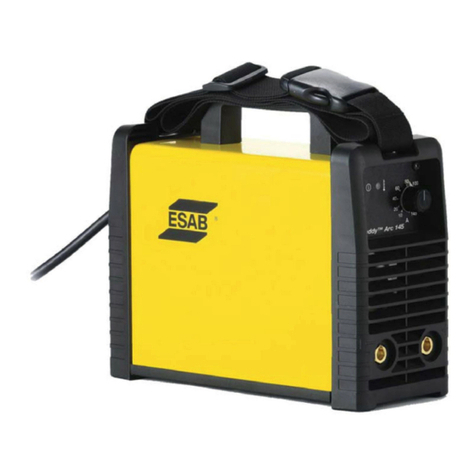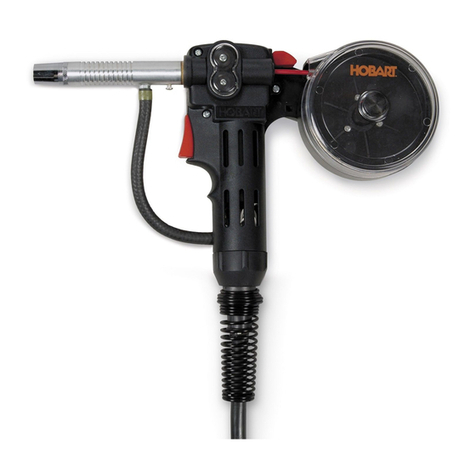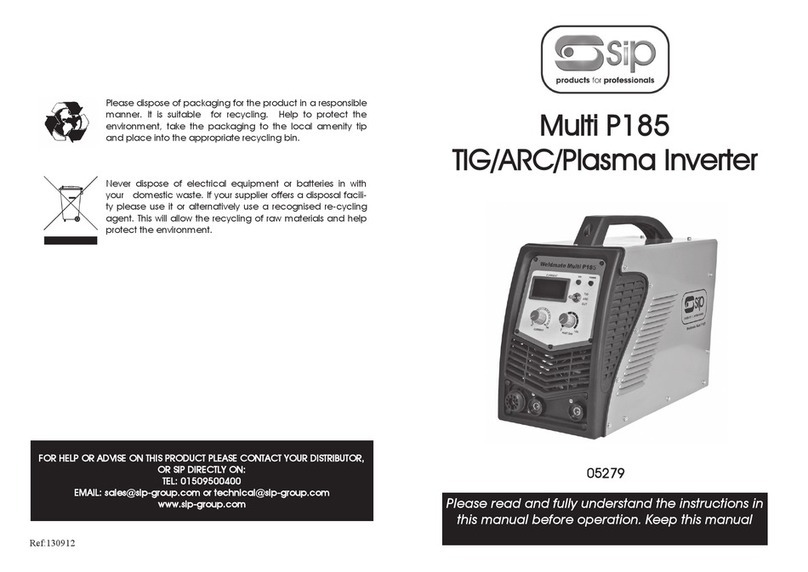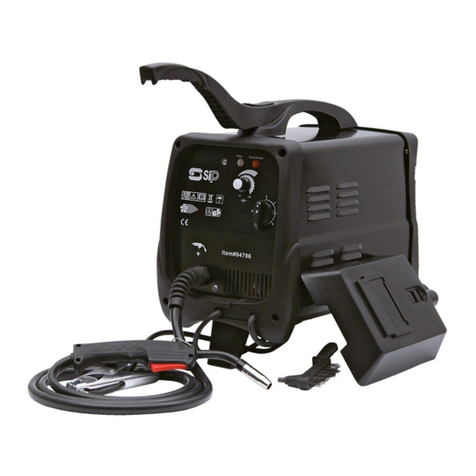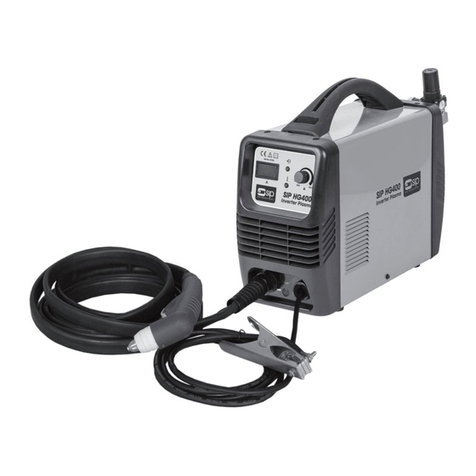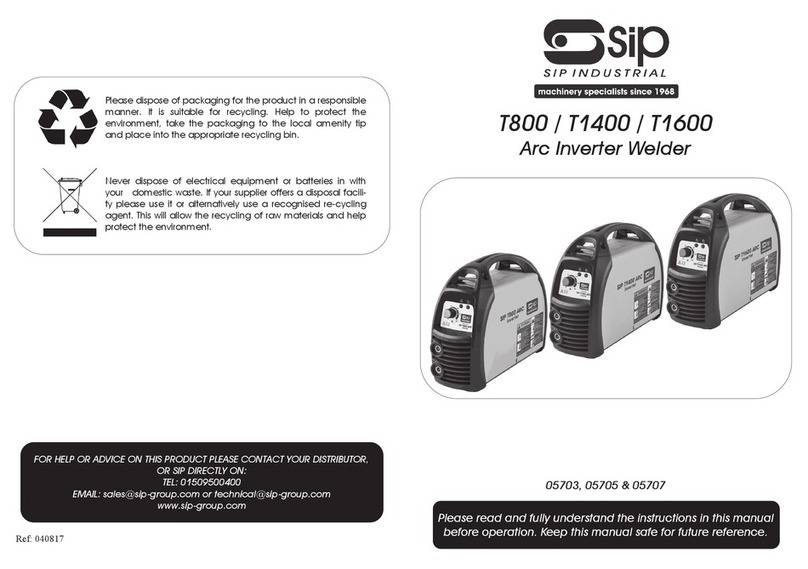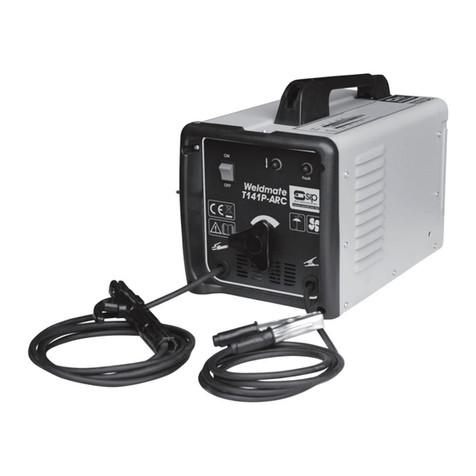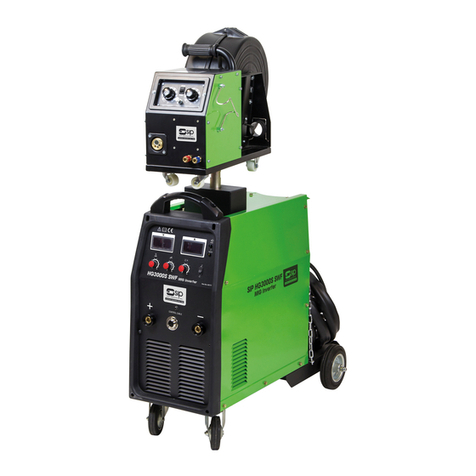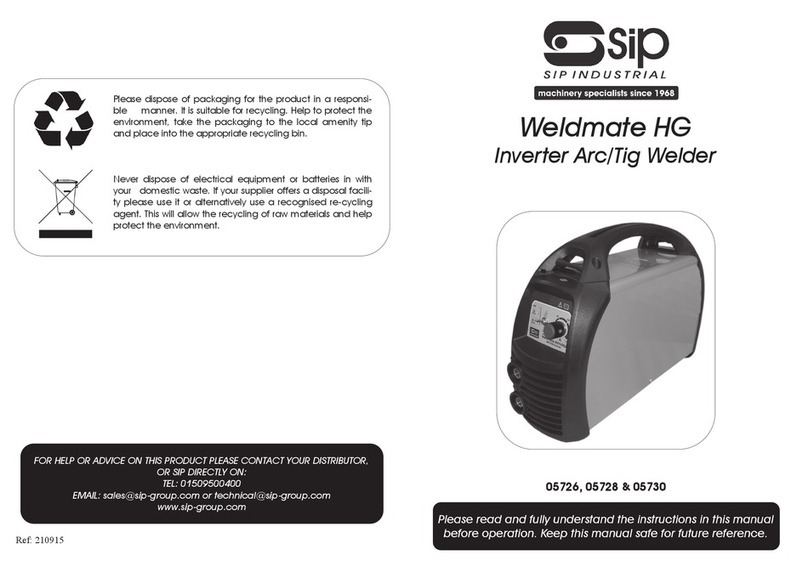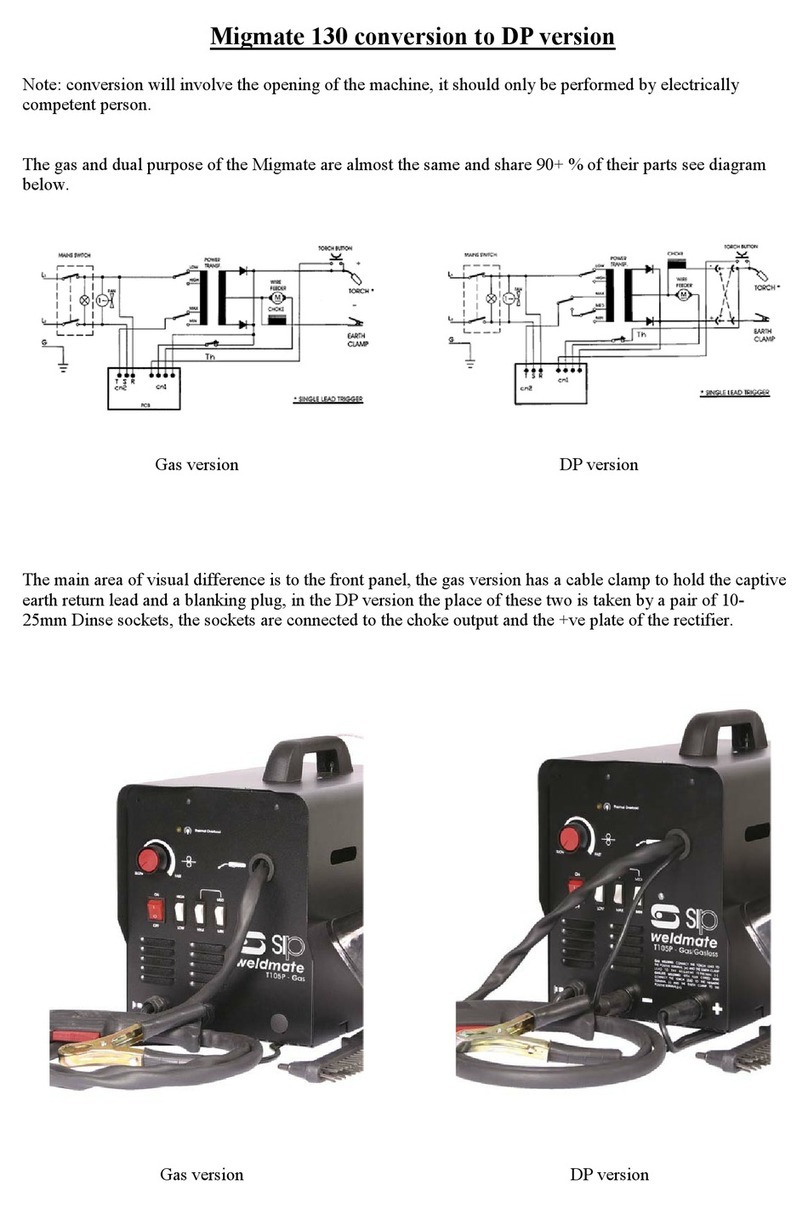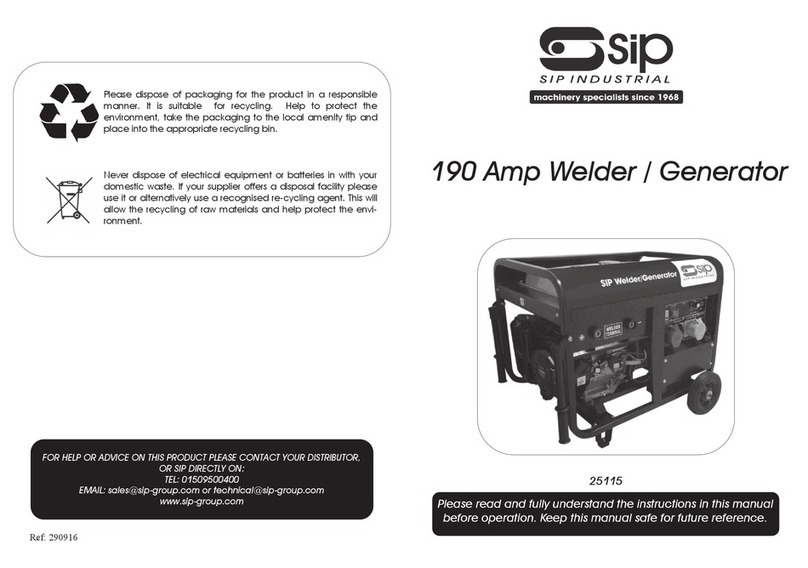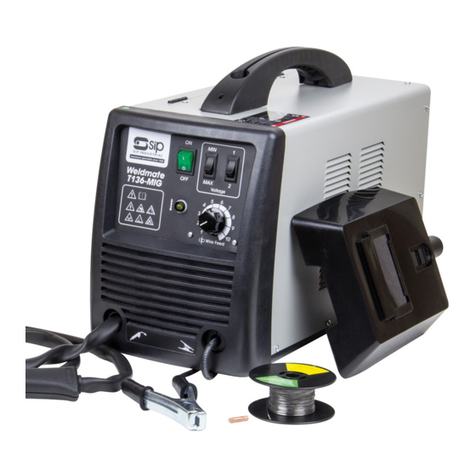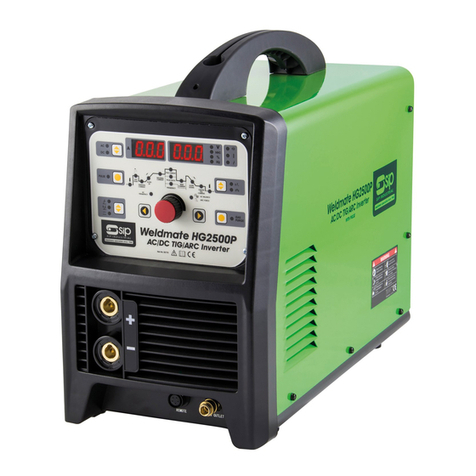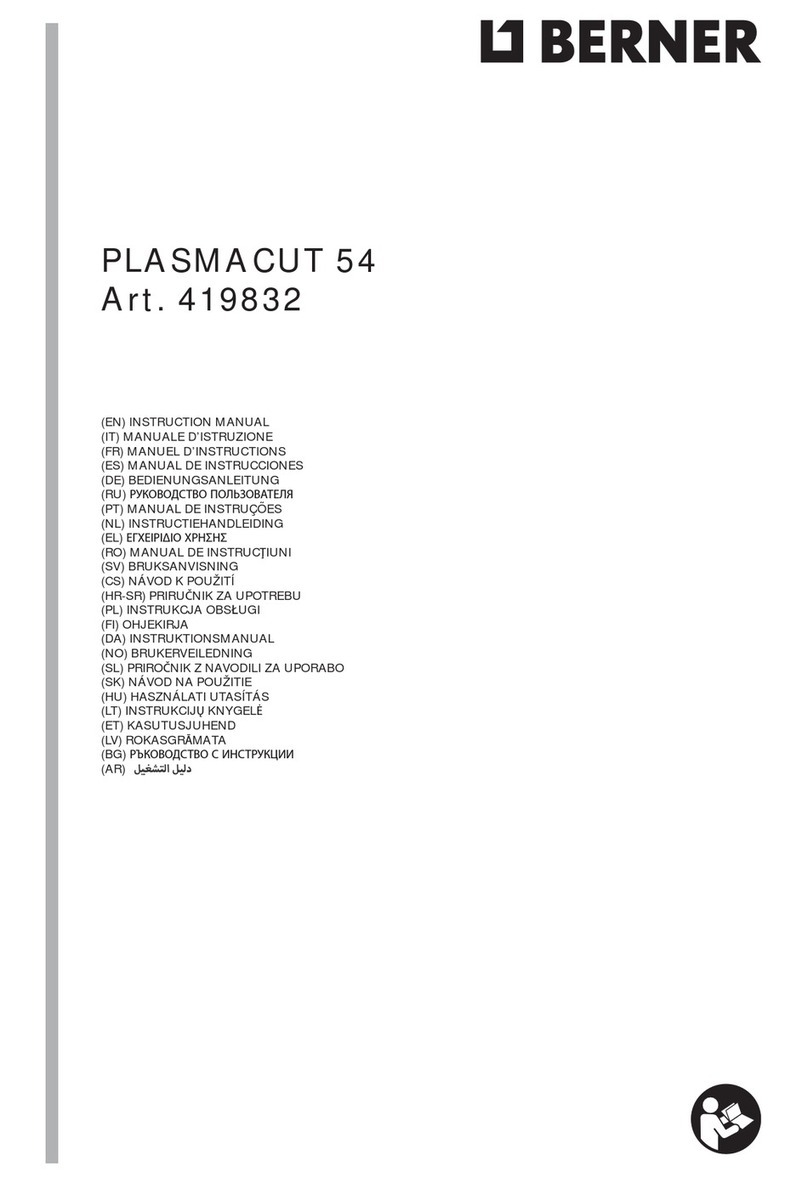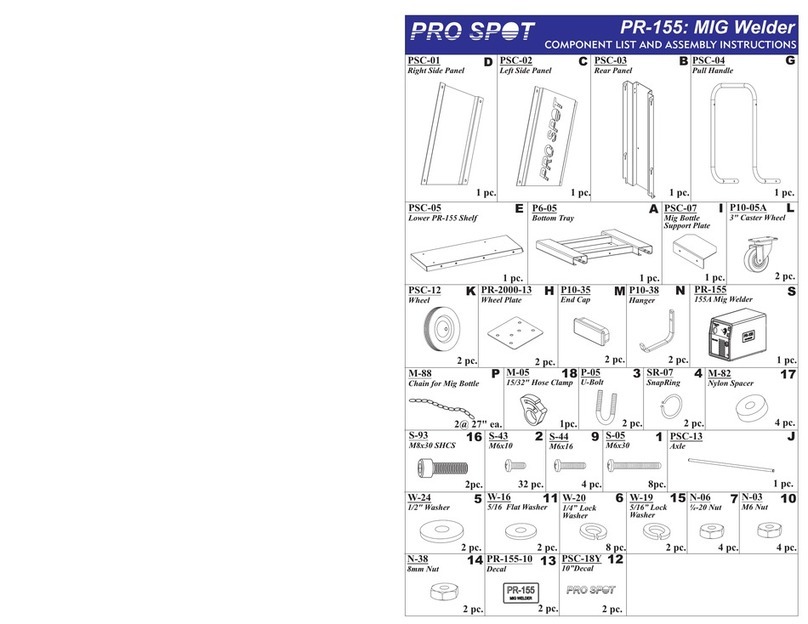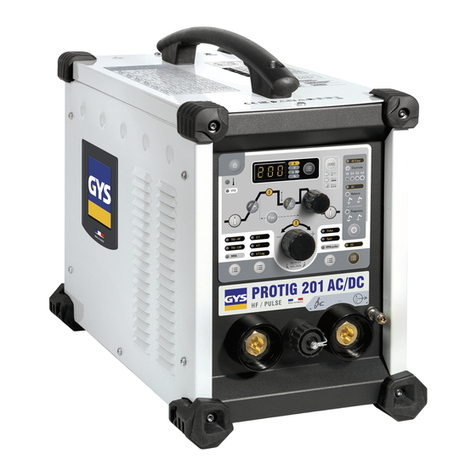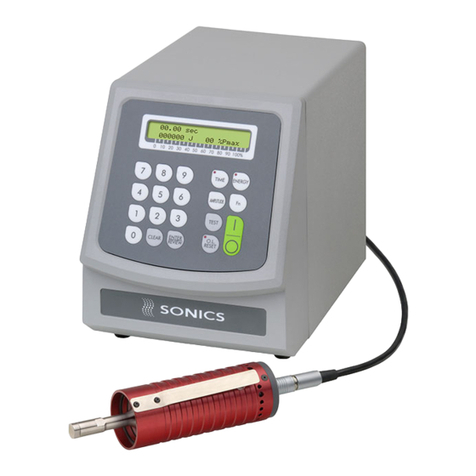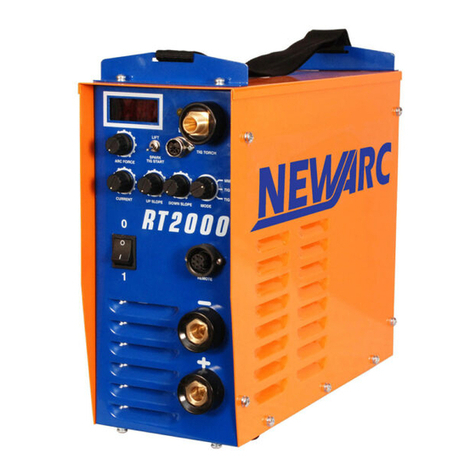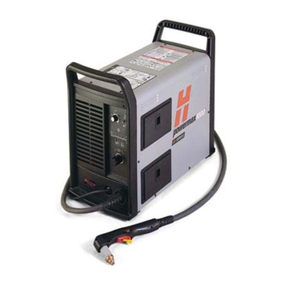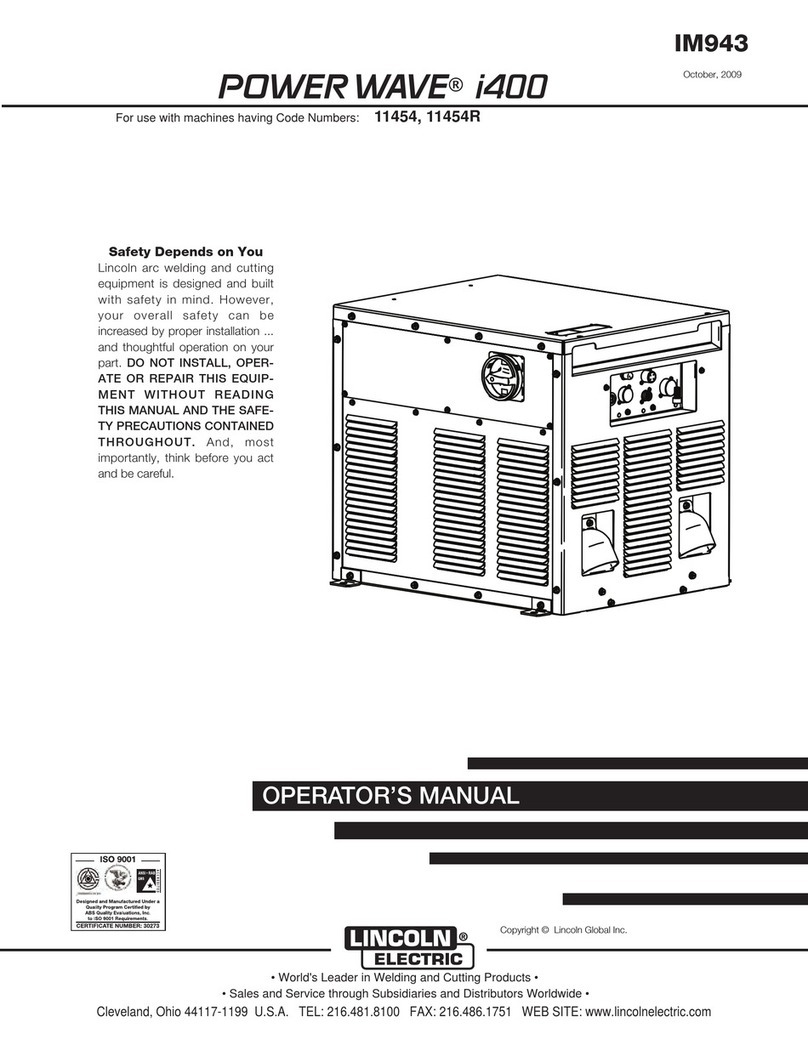18
TIG torch assembly
1.Select the tungsten electrode to match current level polarity to be welded at.
2.Grind the end of the electrode to it’s required shape.
3.Select a collet body and collet that match the electrode size.
4.Select a ceramic nozzle for low power use a low number and high current a higher
number.
5.Select a back cap based on access to the weld area to fit shorter caps the elec-
trode may need to be shortened.
6.Screw the collet body into the torch head.
7.Screw the ceramic nozzle on the collet body.
8.Insert the collet through the torch head into the collet body.
9.Push the electrode through into the collet until the point of the electrode is 10mm
past the end of the ceramic nozzle.
10.Screw the back cap onto the torch head but do not tighten.
11.Adjust the pointed end of the electrode so the distance from the point of the elec-
trode to the end of the ceramic nozzle is approximately 3 times the diameter of the
electrode.
12.Tighten the back cap.
ALL TIG modes
You will need the following extra items
a.Regulator
b.Bottle of Argon Gas.
c.Tungsten welding electrode.
d.Filler rod.
At foot pedal control is available as an optional extra
1.Screw the TIG torch power/gas connection into the torch power socket on the front
of the P177, ensure the plastic insulator cover is fitted over the nut.
2.Connect the torch trigger connection to the trigger socket
3.Fit the earth return lead into the positive power socket.
4.Ensure the electrode lead is not attached to the P177.
5.Connect the gas connection on the rear of the P177 to the regulator on the argon
gas bottle, additional gas fittings and hose may be needed.
If you are using a foot pedal connect the 3 pin connector the remote control socket,
if you wish to trigger the welder using the foot pedal also fit the 2 pin connector into
the trigger socket instead of the torch trigger lead.
OPERATING INSTRUCTIONS TIG
7
SAFETY….cont
FIRE AND EXPLOSION PREVENTION:
1.Causes of fire, and explosion are: combustibles reached by the arc, flame, flying
sparks, hot slag or heated material, misuse of compressed gases and cylinders, and
short circuits. BE AWARE THAT: flying sparks or falling slag can pass through cracks
along pipes, through windows or doors, and through wall or floor openings and out
of sight of the operator. Sparks and slag can fly up-to 10 metres.
2.Keep equipment clean and operable, free of oil, grease and (in electrical parts) of
metallic particles that can cause short circuits.
3.If combustibles are in the area. DO NOT weld , move the work if practical to an area
free of combustibles. Avoid paint spray rooms, dip tanks, storage areas, ventilators. If
the work can not be moved, move combustibles at least 35 feet away out of reach
of sparks and heat, or protect against ignition with suitable and snug fitting, fire-
resistant covers or shields.
4.Walls touching combustibles on opposite sides should not be welded on. Walls, ceil-
ings and floor near the work area should be protected by heat resistant covers or
shields.
5.A fire watcher must be standing by with suitable fire extinguishing equipment during
and for some time after welding:
a.Appreciable combustibles (Including building construction) are within 10 metres.
b.Appreciable combustibles are further than 35 feet but can be ignited by sparks.
c.Openings (concealed or visible) in floors or walls within 10 metres may expose com-
bustibles to sparks.
d.Combustibles adjacent to walls, ceilings, roofs or metal partitions can be ignited by
radiant or conducted heat.
6.After work is done, check that area is free of sparks, glowing embers, and flames.
7.An empty container that held combustibles, or that can produce flammable or tox-
ic vapours when heated, must never be welded on, unless container has first been
cleaned as described in AWS Standard A6.0 listed 3 in Standards Index. This includes
a thorough steam or caustic cleaning (or a solvent or water washing, depending on
the combustible’s solubility) followed by purging and inserting with nitrogen or carbon
dioxide, and using protective equipment as recommended in A6.0 Water filling just
below working level may substitute for inerting.
8.A container with unknown contents should be cleaned (see paragraph above), DO
NOT depend on sense of smell or sight to determine if it is safe to weld.
9.Hollow items must be vented before welding or they can explode.
10.Explosive atmosphere, never weld where the air may contain flammable dust, gas
or liquid vapours (such as petrol).
